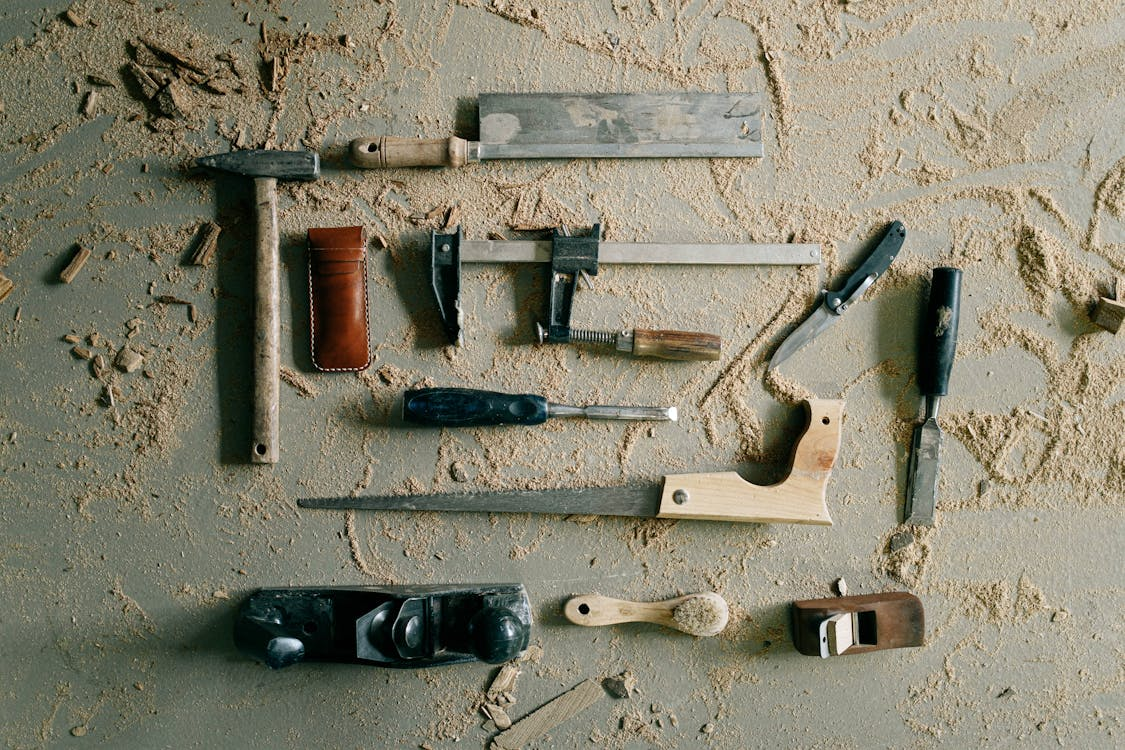(Image source: DepositPhotos)
Whether you're an experienced carpenter or just starting, safety should always be your top priority on the job. Every day presents new challenges, from operating dangerous tools to working in hazardous environments.
Understanding and applying the right safety tips not only protects you from injuries but also ensures your career longevity.
1. Always Wear Proper Safety Gear
Personal protective equipment (PPE) is a non-negotiable part of any carpenter’s toolkit. Make sure you’re equipped with:
- Safety glasses: Flying debris from saws or drills can cause serious eye injuries. Always wear safety glasses, especially when working with power tools.
- Ear protection: Prolonged exposure to noisy tools like saws and drills can damage your hearing. Use earplugs or earmuffs when necessary.
- Gloves: Cuts, splinters, and abrasions are common when handling sharp materials. Wear sturdy gloves to protect your hands, even for tasks that seem mundane like sweeping or moving materials.
- Knee pads: If your work involves prolonged kneeling, knee pads are essential to avoid strain or injury.
2. Inspect Your Tools Regularly
Carpenters rely heavily on their tools. An unexpected malfunction can lead to serious accidents. Make a habit of inspecting your equipment before starting any job:
- Check for wear and tear: Blunt blades or broken handles can compromise your safety. Replace damaged tools immediately.
- Electrical tools: Ensure all cords and connections are intact and that power tools are properly grounded to prevent electrical shocks.
Regular maintenance can keep your tools in safe, working order and save you from dangerous mishaps.
 (Image source: Pexels)
(Image source: Pexels)
3. Ladder Safety is Key
Falls from heights are a common cause of serious injuries among carpenters. Whether you're climbing a ladder for roof work or installing crown moulding, follow these essential tips:
- Three points of contact: Maintain two hands and one foot, or two feet and one hand on the ladder at all times.
- Don’t overload the ladder: Never climb with tools in hand. Use a tool belt or hoist system to keep your hands free.
- Avoid distractions: Don’t leave tools or materials balanced on top of ladders, and always focus on your footing.
If you're working at height, a properly worn harness is a must. Make sure the leg straps are secured, as improper use of harnesses has led to tragic accidents.
4. Be Mindful of Your Surroundings
A cluttered workspace can lead to tripping hazards and accidental injuries. Always keep your workspace clean and organised:
- Clear obstacles: Ensure pathways are free from tools and debris, especially around ladders and scaffolding.
- Mark dangerous areas: Use signs or tape to clearly mark areas where hazards are present, such as open trenches or suspended loads.
Being aware of your surroundings will reduce accidents and create a safer environment for you and your team.
5. Handle Nail Guns with Care
Nail guns are incredibly useful but can be equally dangerous if mishandled. There have been multiple incidents where workers accidentally shot themselves or others. Follow these nail gun safety tips:
- Keep your hands away from the nail exit point: Never place your hand near the firing zone, even when positioning materials.
- Take your time: Always double-check your positioning and ensure you're using the right pressure before firing.
Treat nail guns with the same respect you would give any dangerous power tool, and always engage the safety mechanism when not in use.
 (Image source: DepositPhotos)
(Image source: DepositPhotos)
6. Avoid Unsafe Work Conditions
Don’t compromise your safety by ignoring unsafe conditions on-site. If something seems off, address it before proceeding with your work:
- Unstable structures: Avoid climbing into trenches that aren’t properly sloped or shored. Collapses can be fatal.
- Suspended loads: Never get between a moving object and an immovable one. Steer clear of suspended loads to prevent crush injuries.
It's better to delay work slightly than risk working in a hazardous situation.
7. Lift and Carry Safely
Carpenters often handle heavy materials like wood beams and sheets of plywood. To avoid injury:
- Lift with your legs, not your back: Squat down to pick up heavy objects and use your legs to lift, keeping your back straight.
- Get help: Don’t hesitate to ask for assistance when lifting or carrying particularly heavy or awkward objects.
Preventing muscle strain is just as important as avoiding cuts and bruises on the job.
8. Use Tools the Right Way
Misusing tools can lead to injuries. Always follow these guidelines:
- Cut away from your body: When using knives or chisels, always cut away from yourself to prevent accidents.
- Keep your hands clear: Make sure your hands are not near cutting areas when using saws or drills.
Even seasoned carpenters can become complacent over time, so constantly remind yourself and your team to work safely and methodically.
Safety on the job isn't just about following rules; it's about cultivating habits that protect you and your fellow tradies. From wearing the right gear to regularly inspecting tools and maintaining a clean workspace, these safety tips can make all the difference in preventing accidents.
If you're a carpenter looking to take on more jobs, consider listing your services on ServiceSeeking.com.au. It’s an easy way to connect with clients who value skilled tradies who take safety seriously.
Stay safe out there, and remember—your safety is just as important as the quality of your work.
